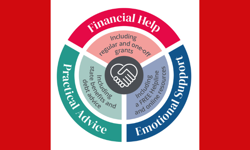For years, quality newspapers embarked upon sustained added-value promotional campaigns designed to stimulate casual readers with the hope of gaining longer term retention. It was common for titles to run a series of big media budget promotions running over 7/14 days with added value items such as booklets, CDs, DVDs and posters. However the backdrop of falling base sales, lower sale uplifts, less emphasis on monthly ABC figures, more commercial focus and the recession (which hit revenues, especially in advertising) has led to a change of strategy.
The old theory was based upon converting a very small percentage of readers who bought heavily promoted issues to buy more regularly. This way, there would be a good increase in sales which would more than compensate for the underlying fall in base sales. The new theory is that if you reward loyal readers, you lock people into a long-term regular purchase which helps stabilise sales and is less reliant on expensive promotional sales uplifts. Moreover, if you make it attractive to purchase a regular subscription, you can actually begin to grow sales and harm the opposition.
This is nothing new if you are a magazine publisher – for years, magazines have been growing postal subscription sales through reduced-price offers, free gifts and gifted subscriptions. Most glossy monthlies have a healthy percentage of their sales through the pre-paid postal subscription route.
From defence to offence
Although newspapers cannot run postal subscriptions, the Times and the Telegraph have been running pre-paid voucher subscriptions (where the reader exchanges a voucher for a copy at a newsagent) since the price war of the mid 90s. This was mainly a defensive strategy, initially by the Telegraph to combat the Times’ 10p cover price and then as a counter defence by the Times as Telegraph subscriptions grew. They were heavily promoted on a discounted weekly price with entry points as low as £1 and ongoing prices around £1.50 a week for seven days of newspapers. As they evolved, they were strictly limited to heavily vetted non-readers so that they didn’t cannibalise regular full price sales. They were never promoted in the newspapers or on their websites.
Since 2005, with the price war over, the subscription models changed. The Telegraph and then the Times began to increase the average weekly prices (helped by an increase in the newstrade cover prices) to over £4 per week, without a noticeable decrease in subscribers. In the last few years, the Guardian has introduced its own pre-paid voucher subscription offering and the Independent has increased its spend on recruiting subscribers.
In the last three years, with promotions less effective and pressures on justifying marketing spend, the quality newspapers have started to shift their subscriptions strategy from a defensive one to an acquisition one. Numerous subscription adverts have appeared in newspapers, on websites and via mail order and telephone canvassing. All readers are able to take up a cut-price, pre-paid voucher subscription.
But the big strategic change is the introduction of member clubs that now give subscribers exclusive benefits that are not available to other readers. These clubs are designed to keep hold of readers with a plethora of exclusive benefits, promotions and offers. The basic premise is that if subscribers are able to get ‘special’ access through offers such as discounts, reader evenings or previews, then in addition to a discounted cover-price (around 25%), the reader will have a ‘deeper’, longer-lasting relationship with the newspaper.
The one that is most developed is Times+ which supports the Times and the Sunday Times and has 115k members, which is 25% of their UK newstrade sale. The largest one is Telegraph Subscriber (Daily and Sunday Telegraph) which was launched in 2010 and has 328k members and is 52% of their UK newstrade sale. The newest one is Extra from the Guardian and the Observer which has 40k members and is 16% of their UK newstrade sale.
These clubs now have dedicated staff, their own budgets and their own dedicated portals with access limited to subscribers. Traditional newspaper promotions departments still exist within some publishers, but it will only be a matter of time before departments are completely integrated with subscriptions being the major part of the promotional mix.
For this strategy to work, I think that there are a number of key issues that need to be addressed.
1. Investment is key. The large successful loyalty programmes have substantial investment in infrastructure with a long-term payback. Once they are up and running, they open up a whole new understanding about customer behaviour which in time opens up a big potential future revenue stream.
2. Database management is key. For any loyalty programme to succeed, the collection and maintenance of detailed customer data is important. This allows for accurate analysis and the ability to continually refine the offering to take into account customer needs.
3. The message is key. The club needs to have a strong and simple offering. If the offer is too complicated or unwieldy, then readers will lose interest. If the offer is too simple and not rewarding enough, then readers will not commit.
4. Staff are key. Membership marketing requires new skills. It’s about analysis and long-term partnerships, not quick-fix promotions. However, the unique skills of traditional promotions staff must be combined with the new skills to ensure that all readers are satisfied and that priorities are established. A strong multi-discipline marketing and promotions team must evolve.
5. Editorial buy-in is key. The key to all successful promotions is getting the editorial buy-in and with loyalty schemes this goes much further. As well as the editor and senior management, you need to know the reporters and editors at department level (ie. travel, arts, sports). A mention at the bottom of a regular column or at the end of a review will do wonders for response but more importantly it makes the reader engage more than a promotional advert. It also makes non-subscribers aware that they are missing out on something.
6. Offers must be unique, valuable and available to the subscriber. The proliferation of internet vouchers and offers means that exclusive offers / benefits are very hard to negotiate. Some offers are simply not strong enough and others are too exclusive or geographically challenging. A London ‘reader evening’ can effectively exclude 60% to 70% of subscribers. A free glass of champagne or programme to a mediocre show isn’t that appealing.
7. A club should offer something you can’t get elsewhere. If a subscriber gets an insight into an exhibition from a curator or a day early to book tickets for the Opera or an exclusive preview they will feel special.
8. Big tangible offers. If the quality newspapers want to develop and grow subscriptions that cost around £240 a year, they need to offer something equally valuable that is open to all subscribers. This could mean savings on regular purchases like beverages, petrol, shopping or it could mean partnering with an established discount scheme or like minded partners. There is also scope for partnering with other member organisations to offer joint memberships or joint benefits. But to succeed, the consumer will need to see some fairly instant tangible benefits.
It is not surprising that the emergence of the newspaper club has become the latest marketing tool to stem the decline in newspaper purchase. It’s an obvious progression in a market that is (at last) charging a decent cover price for its newspapers. The challenge is to develop a reader club that has the familiarity of a ‘friends’ club like the Tate or Shakespeare’s Globe but with the tangible benefits of a Nectar or Tesco club card. At the moment, the offers available are very much the former and without long-term sustained investment, it will be difficult to achieve the latter. However, it takes time for initiatives like these to evolve and it is without question the smartest route for newspapers to go.
The benefits of membership of Times+ (which internet-only subscribers get as part of their fee) was at the heart of the marketing of the recent introduction of the Times and the Sunday Times paywall. The membership clubs may become much bigger than newspaper publishers ever imagined. A recent advertisement for Subscriptions Managers for a magazine publisher has even asked for applicants who had worked on Times+, Telegraph Subscriptions Club and Guardian Extra which means that the schemes could become the standard for many UK publishers who want to nurture their readers.
In conclusion, I think that reader clubs are a good strategic direction for higher priced newspapers to follow. They will need to be built on a robust database and will require sustained investment. The offers must be a combination of interactive and tangible benefits and publishers will need to develop true partnerships if they are to succeed in creating a winning formula for the subscribers. There are also long-term prospects for building additional revenue through sales of additional products and services which also includes the introduction of paid content on websites, mobile and other devices.










